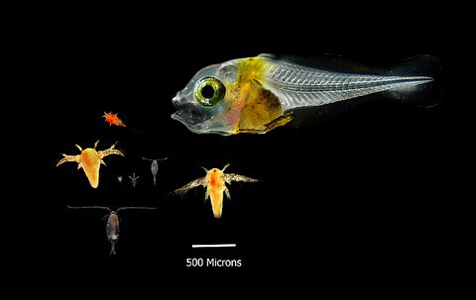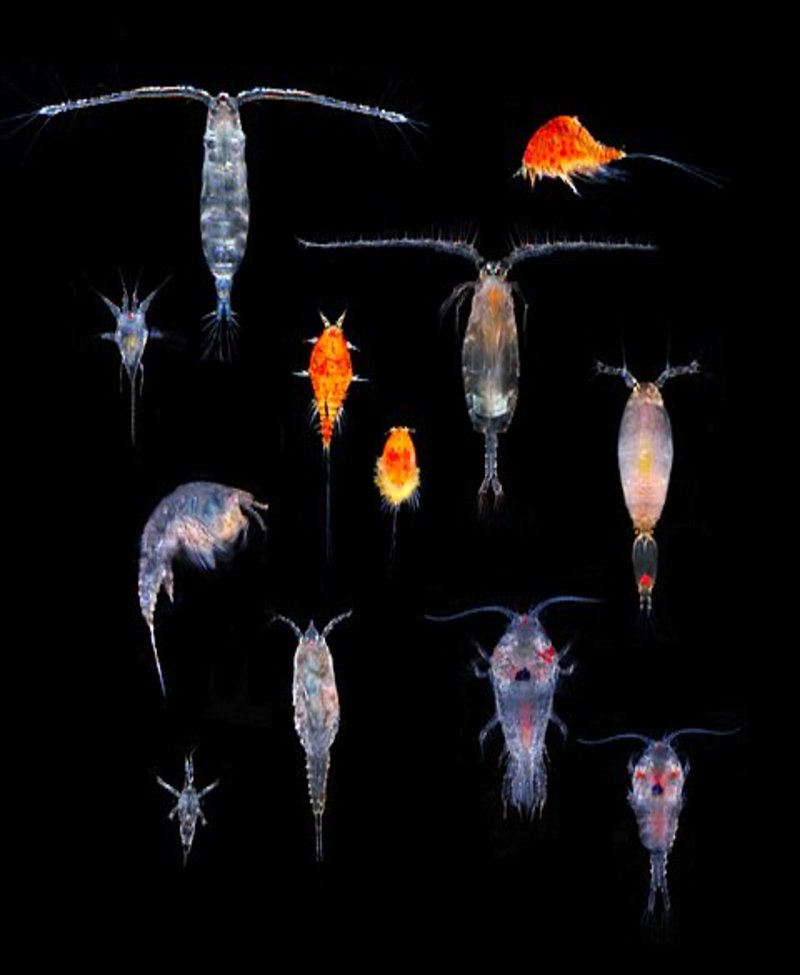First in a Series on Zooplankton – by Matthew L. Wittenrich
Copepods are small or microscopic crustaceans ubiquitous in nearly all aquatic environments. They teem, mostly unseen to the naked human eye, in all types of water — marine, fresh, brackish — and even in boggy terrestrial habitats. Little appreciated, even by serious amateur naturalists, they are key bulk source of oceanic protein.
As the dominant organisms in marine zooplankton assemblages, copepods play a vital role in maintaining food web dynamics and are a major food source for larval fish, pelagic invertebrates, seabirds, and many whales.
First Foods for Marine Fishes
Aquarists interested in propagating marine aquarium fishes have taken a special interest in copepods for their superior nutritional quality and appeal to delicate marine fish larvae. But, with over 14,000 described species of copepods choosing an ideal candidate for culture can be a daunting challenge.
Marine fish larvae are highly selective in choosing their meals and selection changes with age and state of ontogeny. Unlike the fish we try to raise, the microscopic size of copepods limits our ability to observe their behavior, analyze their size and examine color patterns in an attempt to find a suitable species.
When I first started working with copepods as a food source for larval marine aquarium fishes it was hard for me to appreciate the diversity and beauty of these dominant organisms.

Shown are two large golden-colored brine shrimp nauplii and five random copepod nauplii, all approximately to scale. This larval fish is a 5-day-old Abudefduf saxatilis, Sergeant Major, a highly selective larval fish that nearly always refuses the traditional diet of rotifers and Artemia. Copepods are a must for fussy species such as this and most damselfish, angelfish and others.
Micro Discoveries
A flashlight held to the side of a bucket would reveal a swarm of zig-zagging white specks that seemed ideal for food, but the sheer diversity of life was hard to imagine.
So there I was, one o’ clock in the morning, staring under a microscope at two 1.8 mm fish larvae with dissected guts. Two different species of fish, two completely different copepod diets.
Hours of examination under a microscope revealed just how diverse these creatures are, and after dissecting thousands of larval fish, I was well aware that not all copepods are created equal, at least in the eyes of a larval fish.
As a photographer, I am working to capture the diversity of this microscopic world to reveal some of the intricate patterns and diversity that make copepods good or bad in the eyes of a larva.
This image depicts a random sample of copepods from a single drop of water brought in from a plankton tow at Sebastian Inlet, about 40 miles south of Cape Canaveral on Florida’s East Coast.
Color, size, shape, texture, pattern, morphology–because it’s called a copepod doesn’t mean it’s food. From the bizarre to the beautiful, I am finding that copepods are well worth a closer look.
Notes: Sebastian Inlet Map
Reference: The Complete Illustrated Breeder’s Guide to Marine Aquarium Fishes






Hi Matthew,
My name is Johnatas, I am a marine biologist and I work with reef fish ecology. Now I start to study the Abudefduf saxatilis population with shape and chemical otolith analysis.
I want to describe the ontogenetic growth of the otolith in the early stages. I try to collected individuals in this fases, eggs is easy to collect but larvae, from different sizes, is hardy…..so, I am writing to you, to check if you could provide some larvae to me.
I need some individuals of each early stages of known age in captivity (larvae some time after beginning the exogenous feeding).
I invite you to participate in the article.
What do you think???
Regards
JAA